Africa’s cultural heartbeat is often seen through the elegance of its traditional women’s wear. These attires are living symbols of heritage, femininity, and pride. Woven with meaning and adorned with artistry, each outfit reflects the beauty and values of the community it comes from. Whether it’s the regal boubou of West Africa or the intricately embroidered Habesha dress of the Horn, these styles continue to inspire across generations. In this post, we celebrate 22 of the most beloved traditional African attires for women—each with its own story, significance, and timeless charm.
Most Popular Traditional African Attires for Women
1. Kitenge – East Africa

Kitenge is a vibrant, wax-printed cotton fabric popular in Kenya, Tanzania, and Uganda. Worn as dresses, skirts, headwraps, and even handbags, it serves as a bold expression of personal and cultural identity. Kitenge is especially favored during celebrations, weddings, and religious holidays.
2. Ankara – West Africa
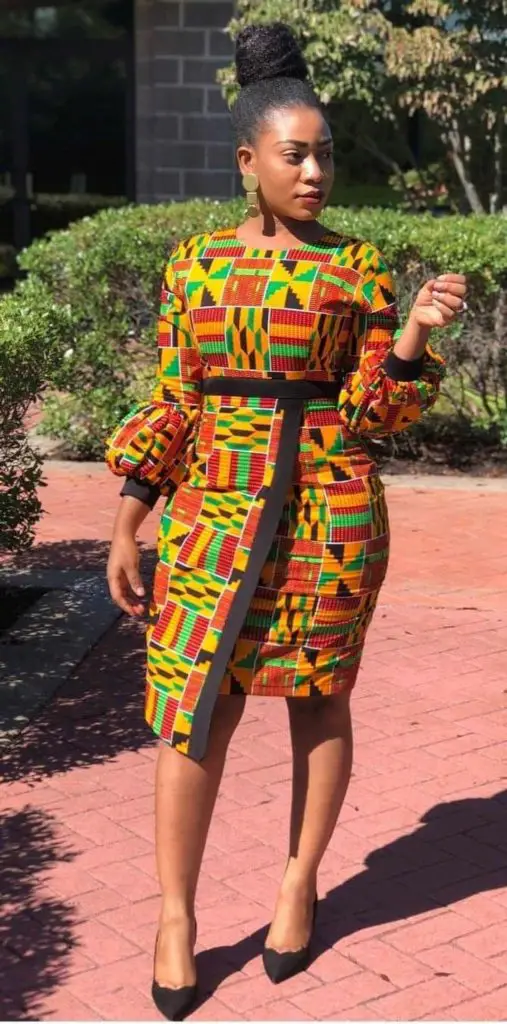
Ankara is a colorful, wax-printed fabric that has become a fashion staple across Nigeria, Ghana, and other parts of West Africa. Used to create fitted gowns, peplum tops, and matching sets, Ankara is known for its bold patterns and versatility, merging tradition with modern fashion.
3. Boubou – West Africa
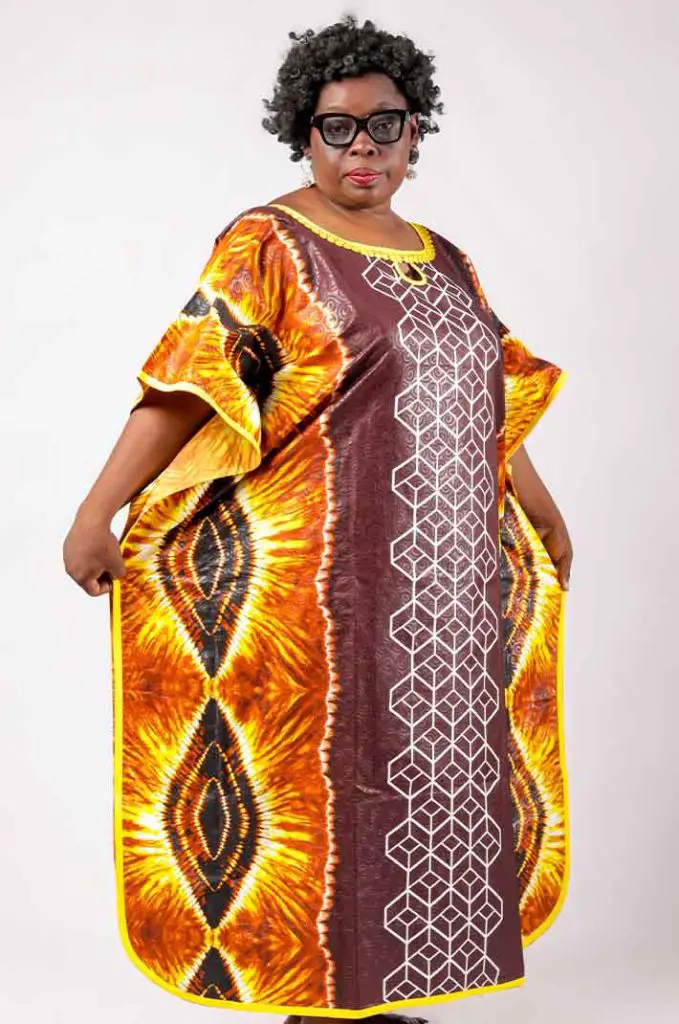
The Boubou is a wide, flowing gown traditionally worn by women in Senegal, Mali, and Nigeria. Made from richly embroidered fabric, it exudes elegance and is often reserved for special occasions such as weddings, religious festivals, and ceremonial gatherings.
4. Kanga – East Africa
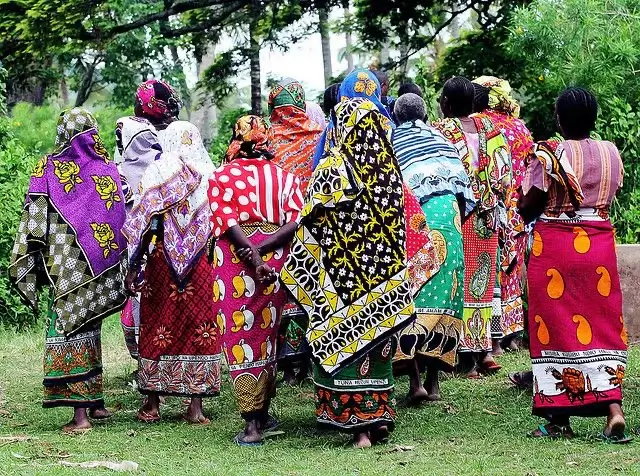
The Kanga is a rectangular cloth printed with vibrant colors and Swahili proverbs. Common in Kenya and Tanzania, it is worn as a wrap skirt, shawl, headscarf, or even as a baby sling. Kangas carry cultural messages and are often exchanged as gifts during life events.
5. Dashiki – West Africa
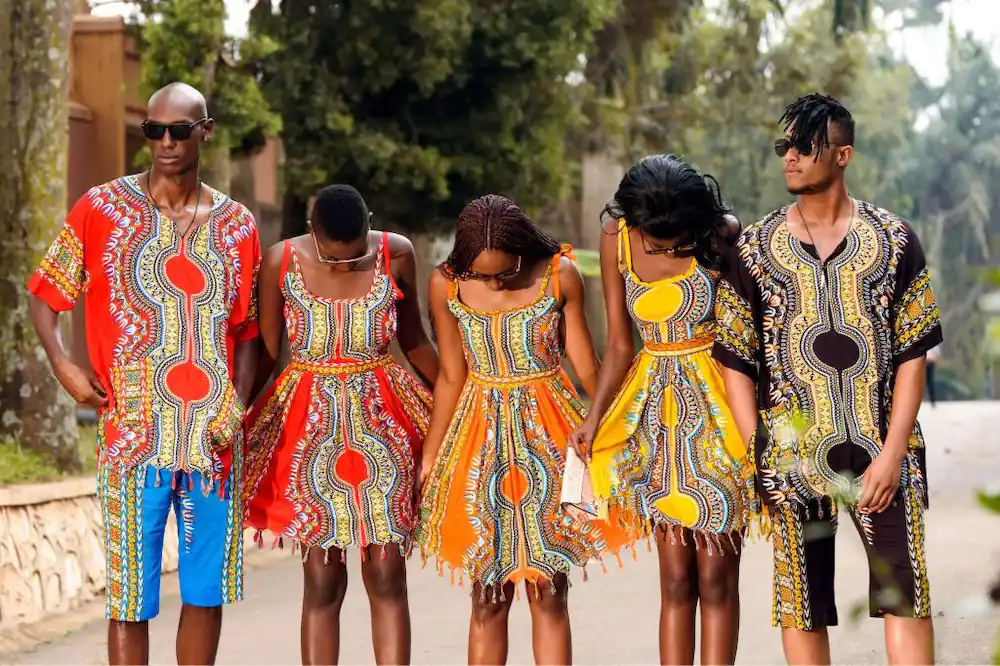
While commonly associated with men, the Dashiki is also worn by women as a loose-fitting tunic or dress, often matched with a wrapper or skirt. Known for its bright colors and intricate embroidery, it symbolizes pride in African heritage.
6. Gele – Nigeria
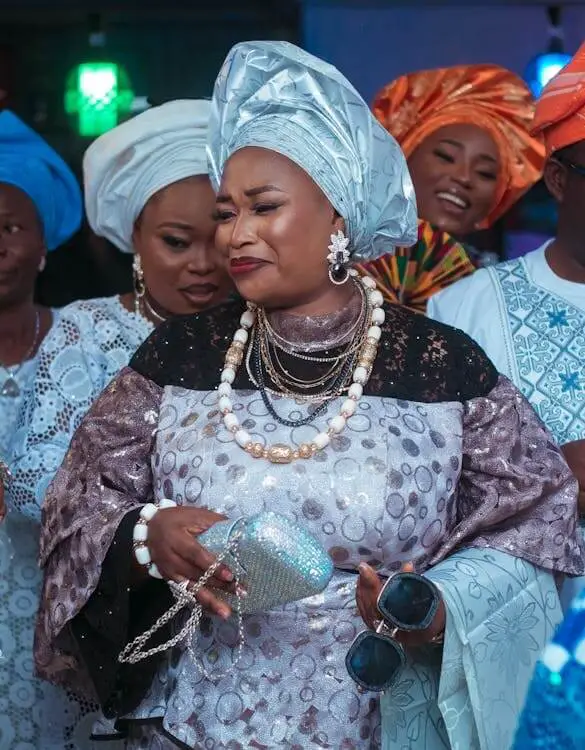
The Gele is an elaborate, structured headwrap worn by women, particularly among the Yoruba in Nigeria. It is typically paired with lace blouses and wrappers for weddings and formal occasions, and mastering the art of tying it is a cultural skill passed through generations.
7. Leso – East Africa
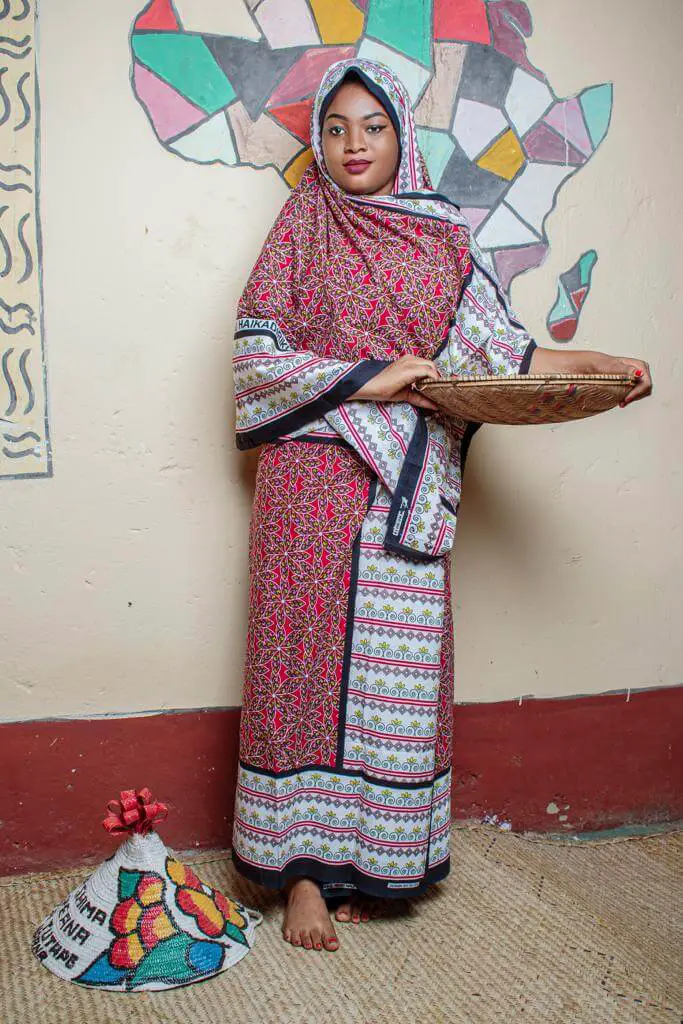
Similar to the Kanga, the Leso is a versatile cotton wrap cloth worn by women along the East African coast. Adorned with colorful patterns and proverbs, it is used as a skirt, apron, or baby sling, and remains a key element of daily and ceremonial wear.
8. Shúkà – Maasai (Kenya and Tanzania)
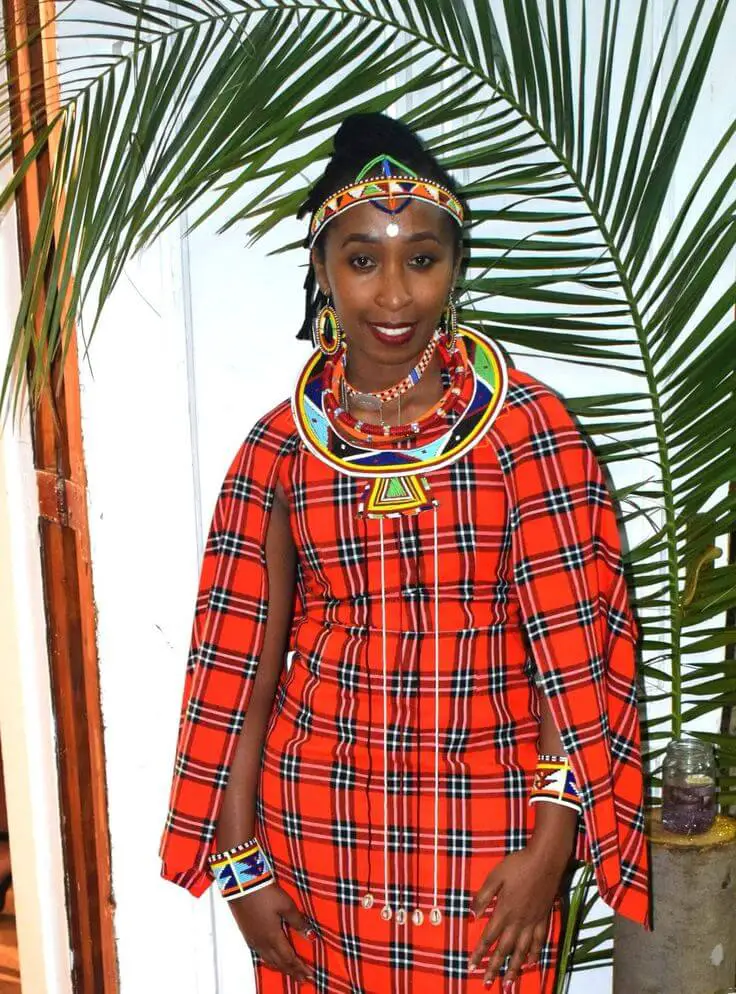
The Shúkà is the iconic cloth worn by Maasai women, often red and blue in color and wrapped around the body. It provides protection against the elements and is worn with layered beaded jewelry that reflects age, status, and marital standing.
9. Sidwaba – Zulu, South Africa
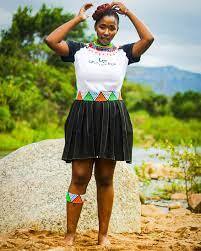
Sidwaba is a traditional Zulu skirt made from leather or heavy fabric, typically black and worn with brightly colored beadwork. Reserved for married women, it is part of a larger ensemble worn during rites of passage, weddings, and heritage events.
10. Iro and Buba – Nigeria (Yoruba)

This classic Yoruba outfit includes the Iro (a rectangular wrap skirt) and Buba (a loose-fitting blouse). Often crafted from lace, Aso Oke, or Ankara fabric, it is a dignified ensemble worn at weddings, church services, and naming ceremonies.
11. Gomesi – Uganda
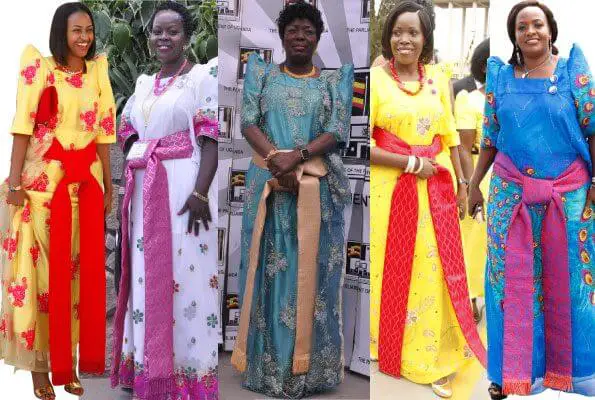
The Gomesi is a floor-length, brightly colored dress with puffed sleeves and a wide sash tied around the waist. Worn by women in central Uganda, it is considered formal wear and is most common at weddings, traditional introductions, and church functions.
12. Mushanana – Rwanda and Burundi
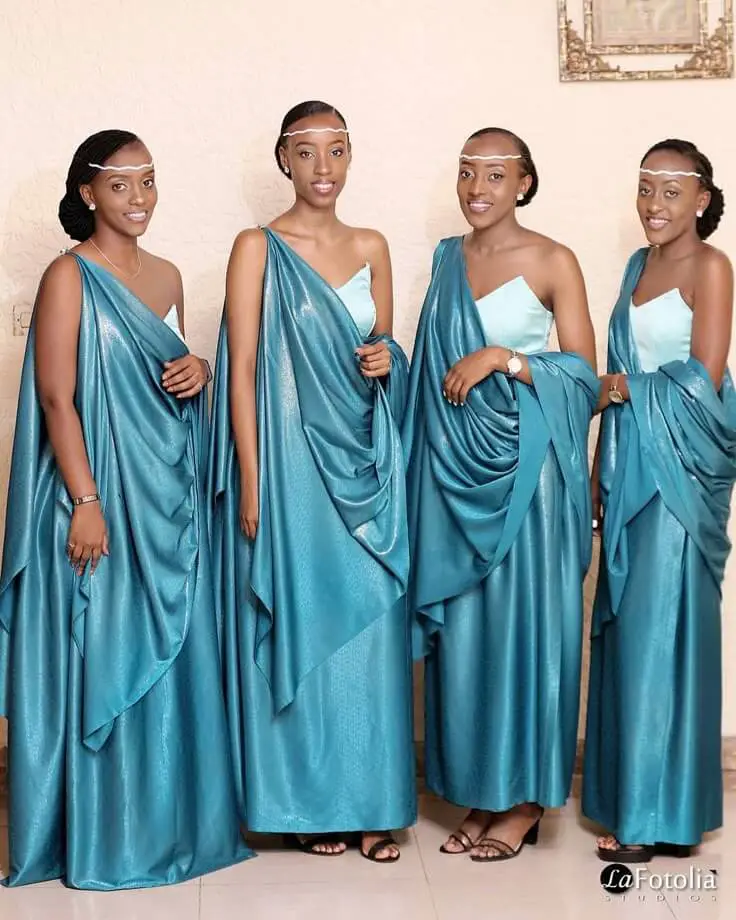
The Mushanana is an elegant, draped outfit typically worn over a fitted blouse. Characterized by its flowing fabric and one-shoulder drape, it is the go-to attire for weddings, traditional dance performances, and other formal gatherings.
13. Habesha Kemis – Ethiopia and Eritrea
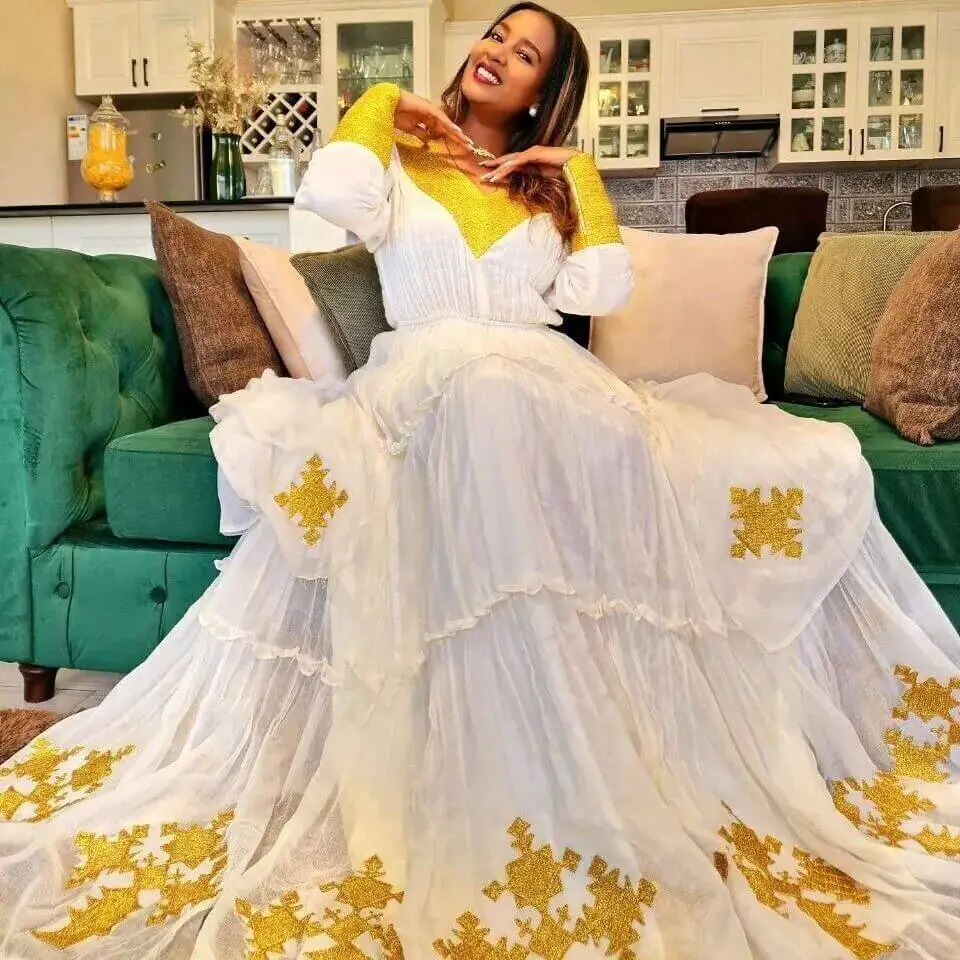
Habesha Kemis is a white cotton dress with colorful, embroidered borders, worn by Ethiopian and Eritrean women during church services, weddings, and holidays. Often accompanied by a shawl called “Netela,” it reflects grace and modesty.
14. Xhosa Traditional Dress – South Africa
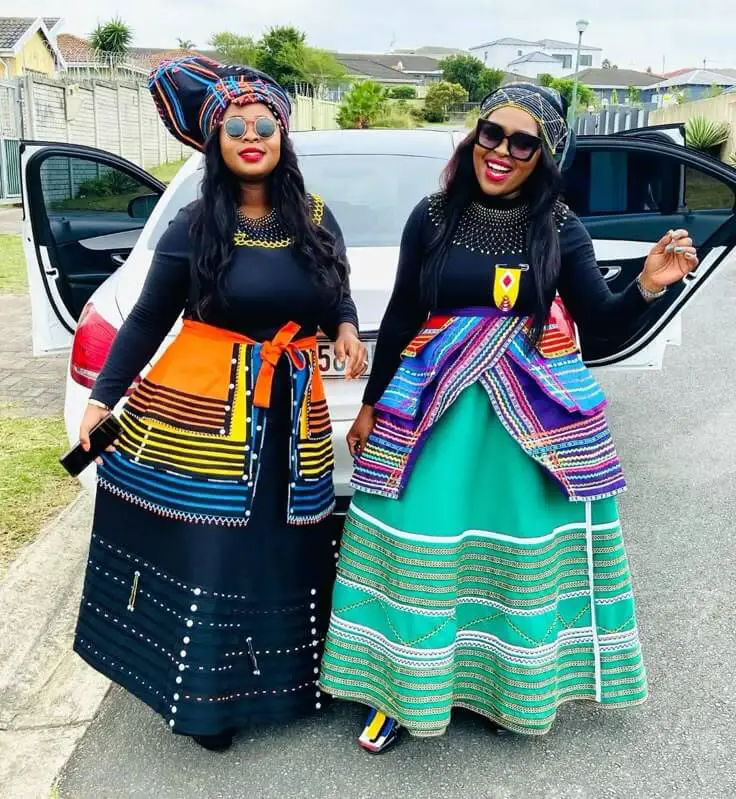
Xhosa women wear a mix of black-and-white patterned dresses and layered skirts, often decorated with intricate beadwork. Accessories include large beaded collars and turbans. The attire marks different stages of life and is prominent during initiation rites and ceremonies.
15. Toghu – Cameroon (Grassfields Region)
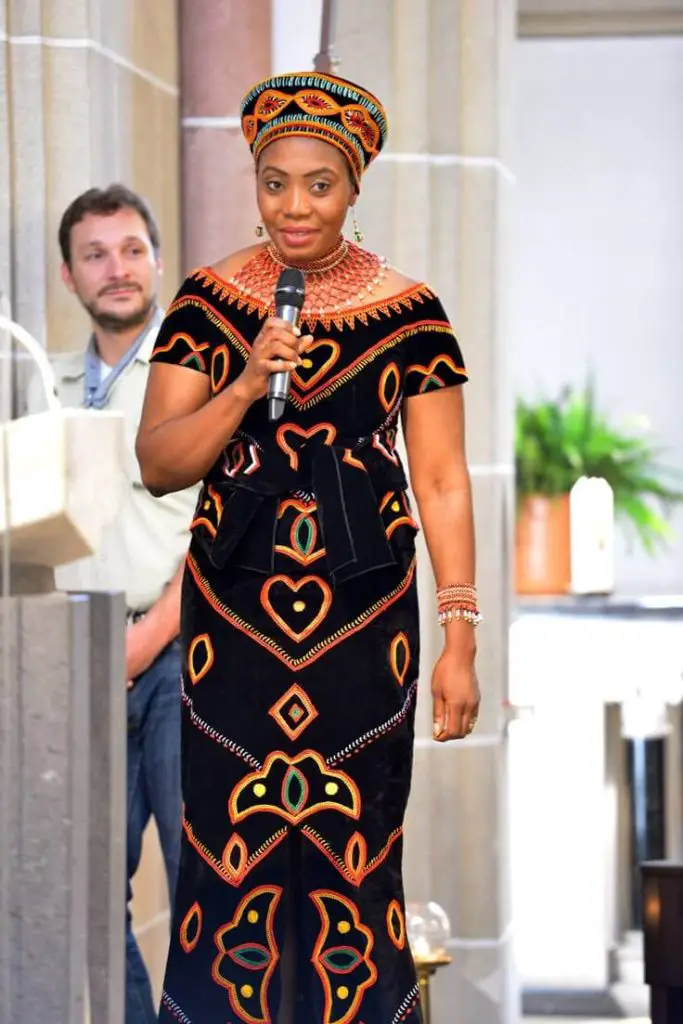
Toghu is a richly embroidered velvet outfit traditionally worn by royalty and women during festivals and official ceremonies. Once reserved for nobility, it is now a proud symbol of heritage in Cameroon, especially in the northwest.
16. Basotho Blanket – Lesotho
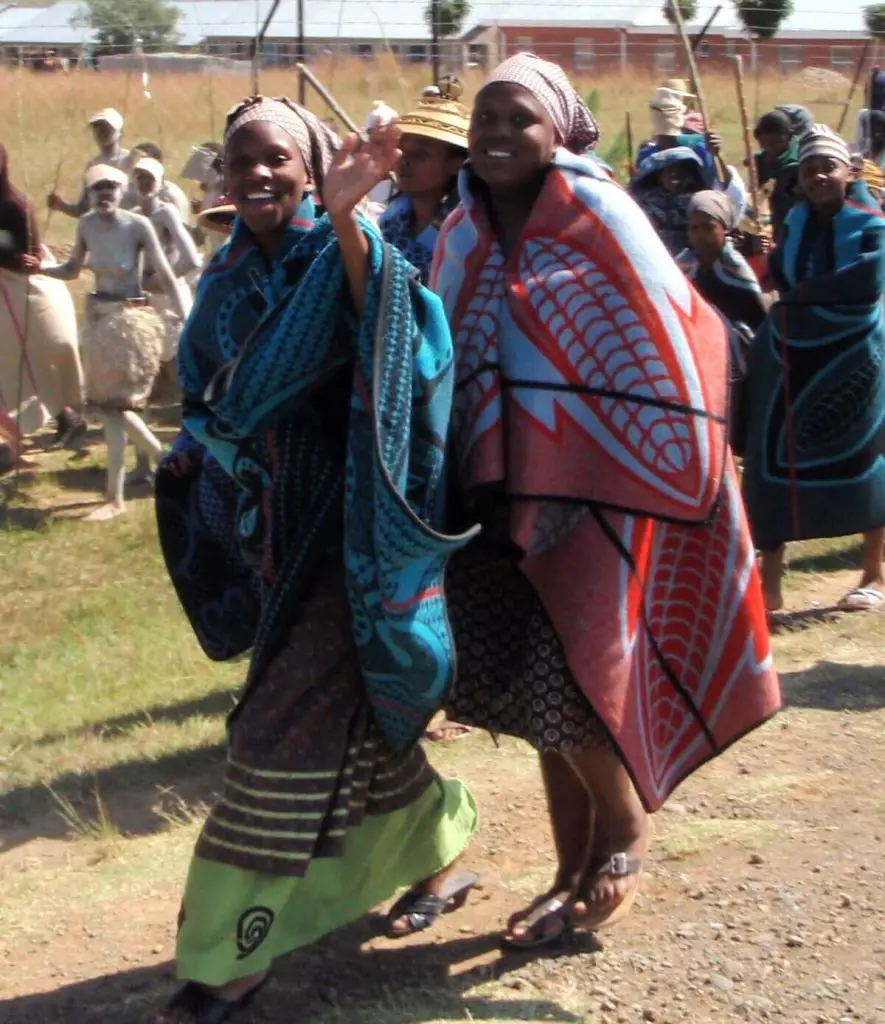
In Lesotho, women wrap themselves in woolen Basotho blankets over dresses or skirts, particularly in cold weather or during rituals. These blankets have symbolic patterns that represent family lineage and national pride.
17. Agbada (Female Version) – Nigeria
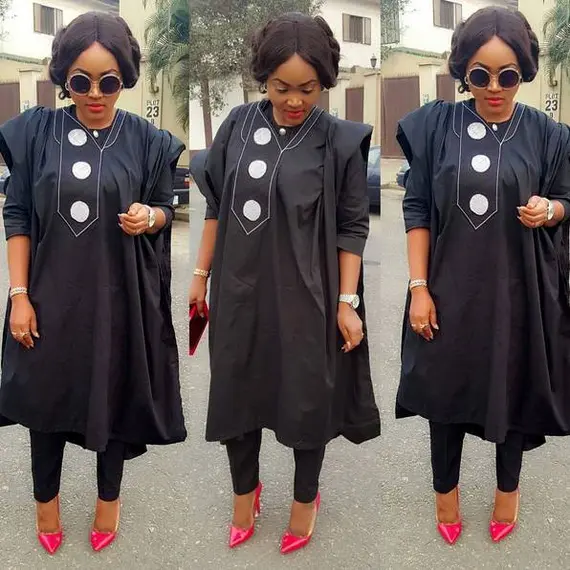
While Agbada is often male attire, modern fashion has adapted it for women with tailored cuts and feminine details. Paired with a wrapper or slim pants, this flowing robe is a statement of elegance and empowerment in contemporary Nigerian fashion.
18. Aso Oke – Nigeria (Yoruba)
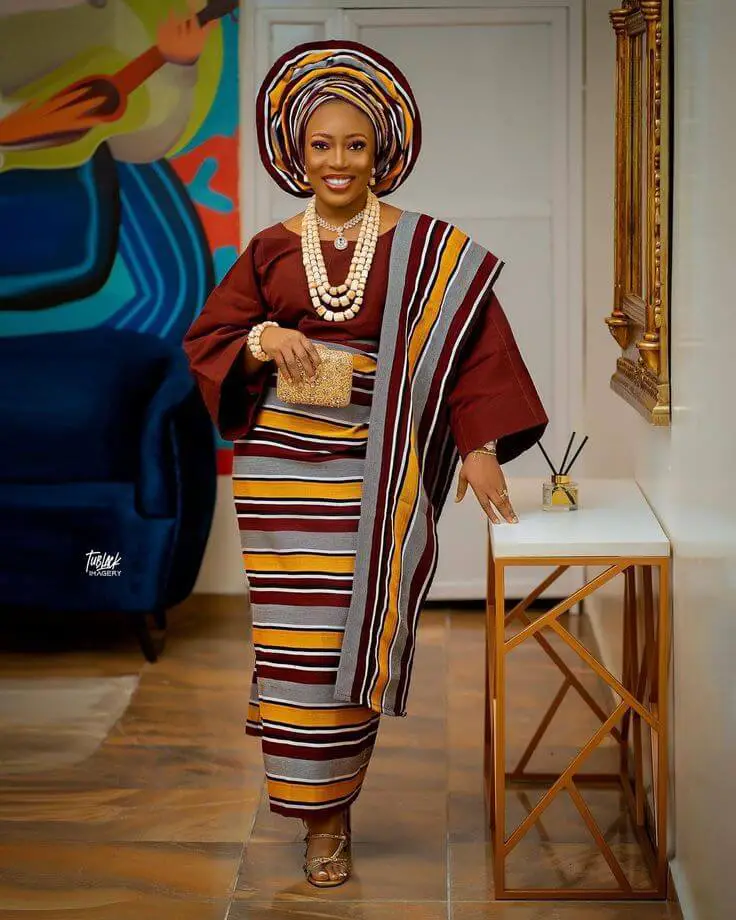
Aso Oke is a handwoven fabric made of cotton or silk, traditionally worn during weddings, festivals, and naming ceremonies. Women use it to make blouses, skirts, headwraps (gele), and shoulder scarves (ipele), showcasing craftsmanship and status.
19. Zulu Beaded Attire – South Africa
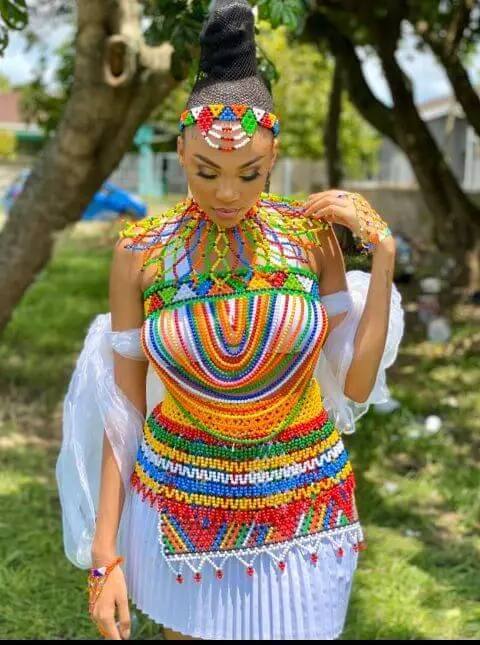
Zulu women wear brightly colored beaded skirts, vests, necklaces, and headpieces, especially during weddings and cultural festivals. The colors and patterns of the beadwork communicate age, marital status, and regional identity.
20. Somali Guntiino – Somalia
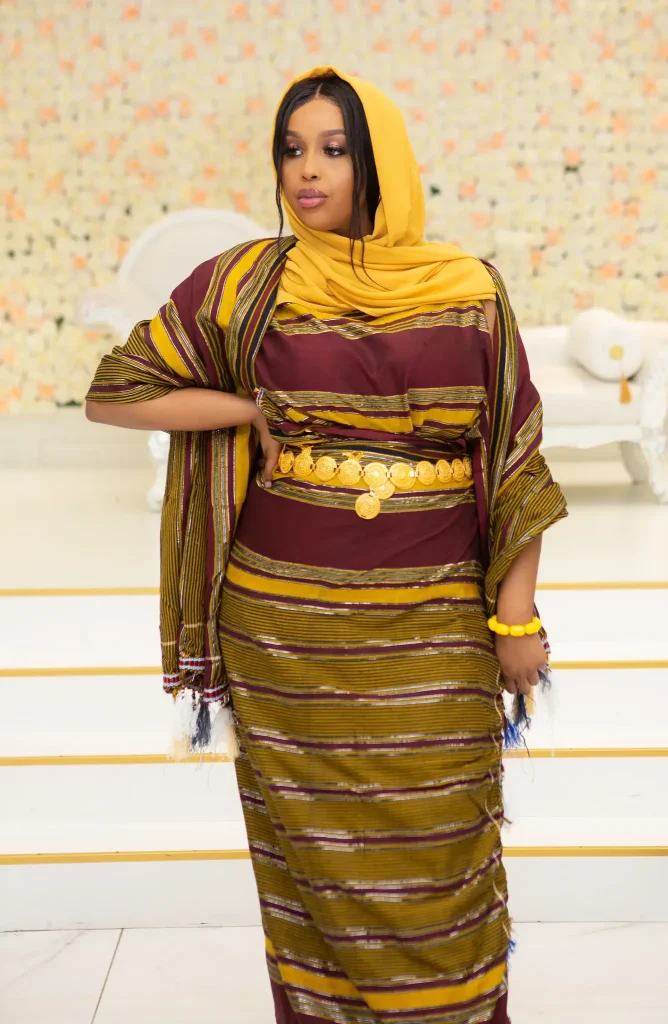
The Guntiino is a long wrap dress worn by Somali women, draped over the shoulder and secured with a belt at the waist. Often paired with a headscarf or shawl, it is versatile enough for both daily wear and ceremonial functions.
21. Karakou – Algeria
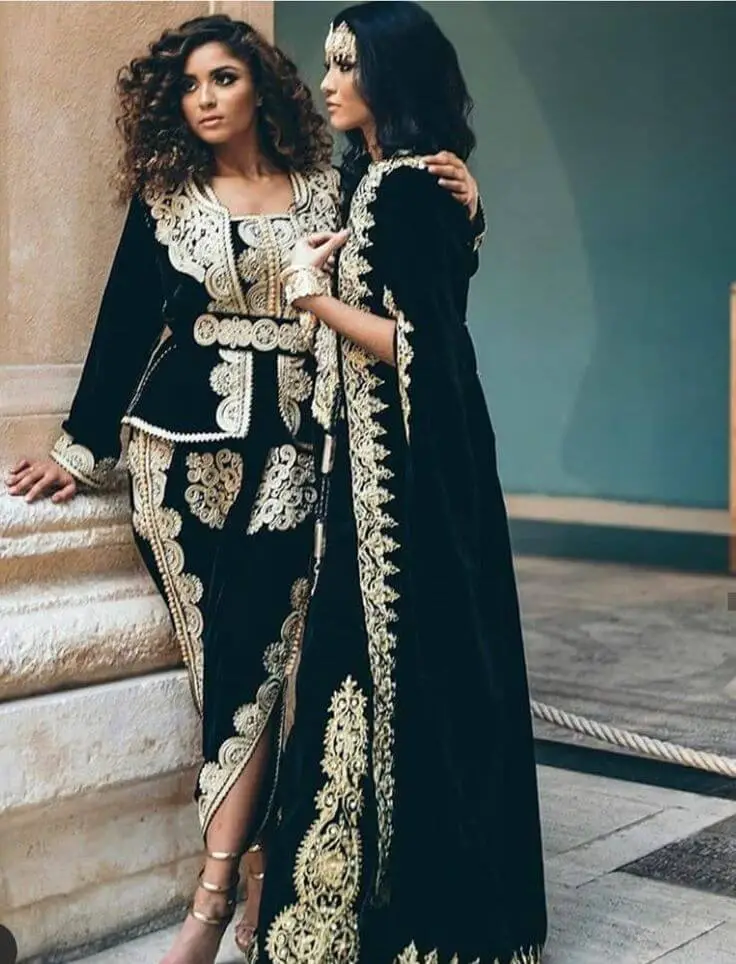
The Karakou is a luxurious traditional outfit from Algeria, particularly from the Algiers region. It consists of a short, fitted velvet jacket heavily embroidered with gold or silver thread, usually paired with a silk or satin skirt or pants known as seroual. The embroidery—called Majboud—is a hallmark of Algerian craftsmanship.
22. Toub (Thobe/Tobe) – Sudan
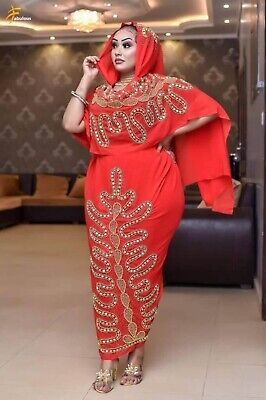
The Toub (also spelled Thobe or Tobe) is a long rectangular fabric traditionally worn by Sudanese women. It is wrapped around the body and draped over the head or shoulders, resembling a sari but with distinct Sudanese flair. Made from lightweight cotton, chiffon, or silk, the toub comes in a variety of colors and designs, often with subtle patterns or shimmering accents.
